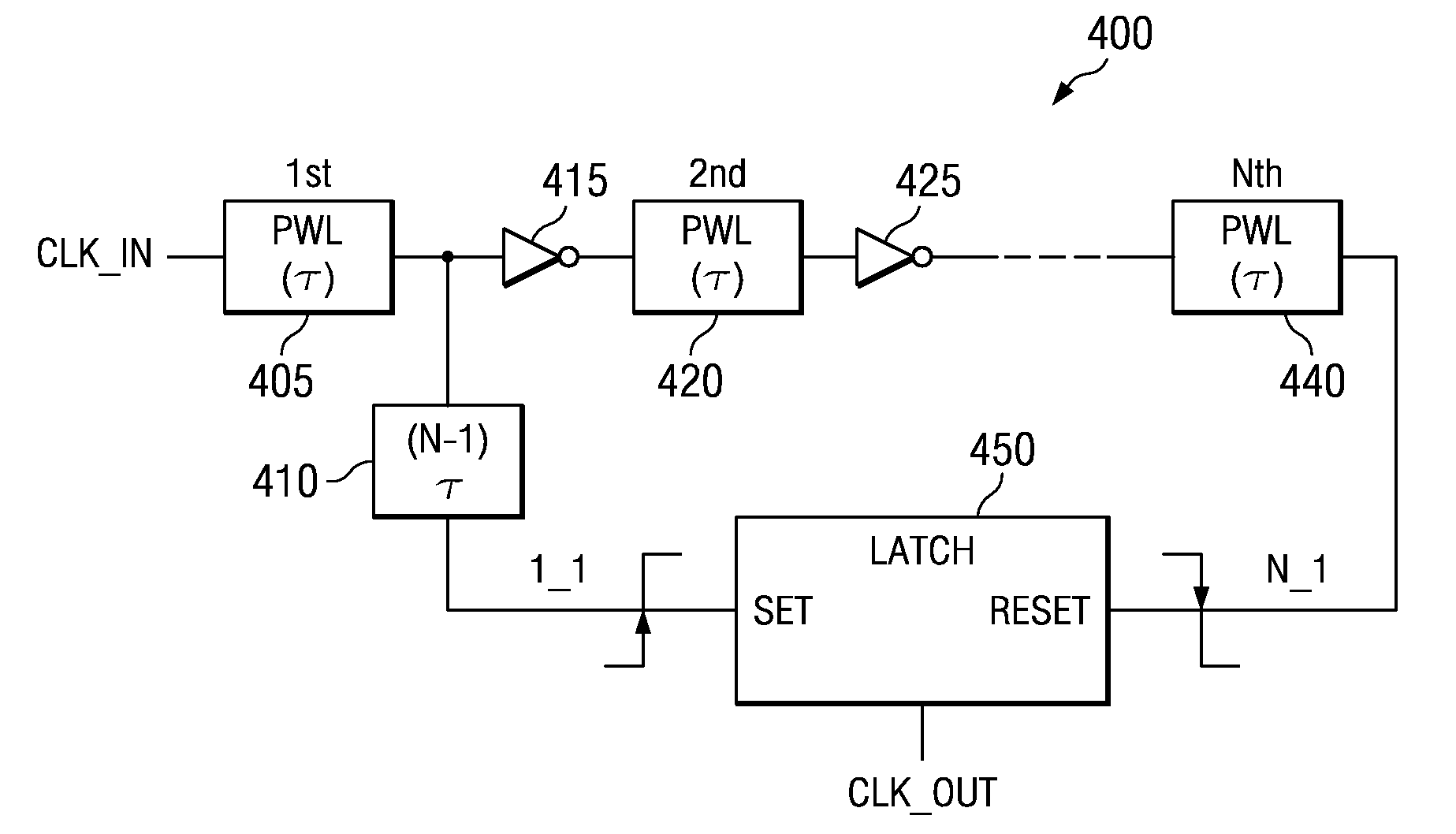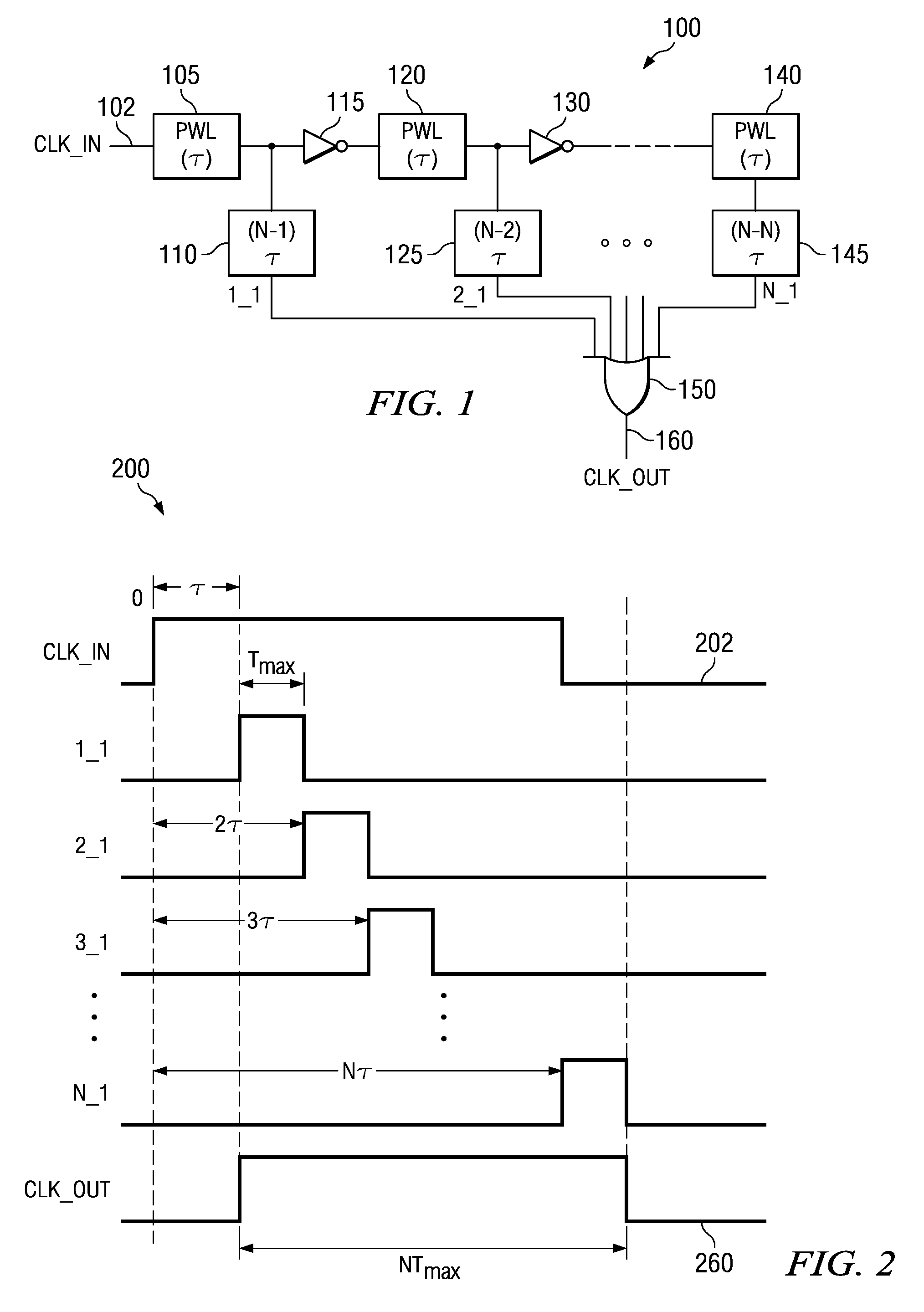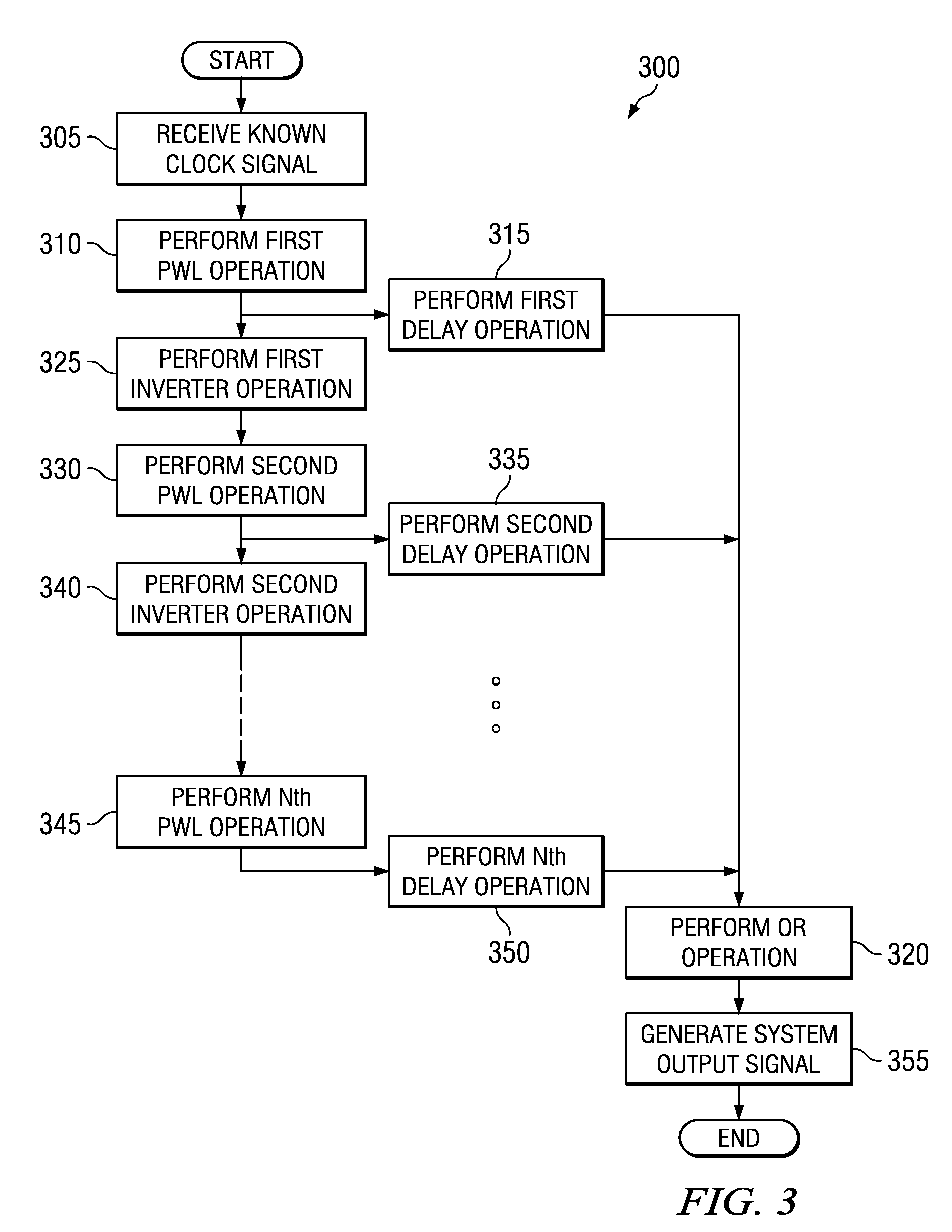Apparatus and method for extracting a maximum pulse width of a pulse width limiter
a limiter and maximum pulse technology, applied in pulse generators, pulse manipulation, pulse techniques, etc., can solve the problems of limiting the resolution of this technique, affecting the reliability of the signal at such frequencies, and affecting the reliability of the signal, so as to reduce the amount of chip area used.
- Summary
- Abstract
- Description
- Claims
- Application Information
AI Technical Summary
Benefits of technology
Problems solved by technology
Method used
Image
Examples
Embodiment Construction
[0031]The mechanisms of the illustrative embodiments make improvements over the mechanisms of the illustrative embodiments in U.S. patent application Ser. No. 11 / 109,090 (hereafter referred to as the '090 application). Thus, in order to best understand the improvements provided by the illustrative embodiments, it is first beneficial to provide a description of the mechanisms of the illustrative embodiments set forth in the '090 application. FIGS. 1-3 hereafter provide illustrative examples of the mechanisms described in the '090 application.
[0032]FIG. 1 is an exemplary block diagram depicting a pulse-width limiter output characterization system 100 in accordance with the illustrative embodiments described in the '090 application. As shown in FIG. 1, the pulse-width limiter output characterization system 100 includes a pulse-width limiter (PWL) 105 which is one or more circuits, or other suitable logic, that is configured to perform pulse-width limiting operations. In one illustrativ...
PUM
 Login to View More
Login to View More Abstract
Description
Claims
Application Information
 Login to View More
Login to View More - R&D
- Intellectual Property
- Life Sciences
- Materials
- Tech Scout
- Unparalleled Data Quality
- Higher Quality Content
- 60% Fewer Hallucinations
Browse by: Latest US Patents, China's latest patents, Technical Efficacy Thesaurus, Application Domain, Technology Topic, Popular Technical Reports.
© 2025 PatSnap. All rights reserved.Legal|Privacy policy|Modern Slavery Act Transparency Statement|Sitemap|About US| Contact US: help@patsnap.com



